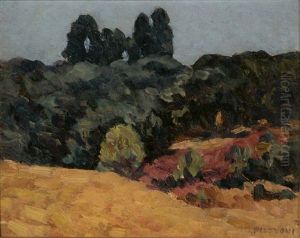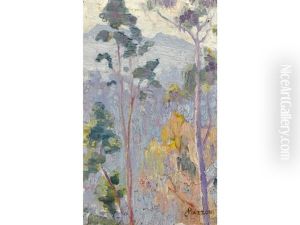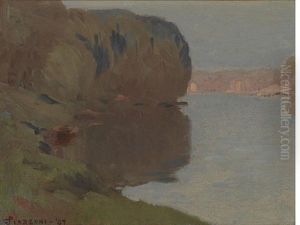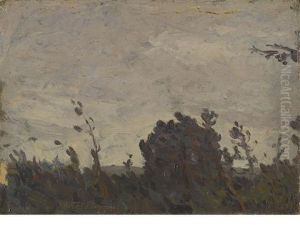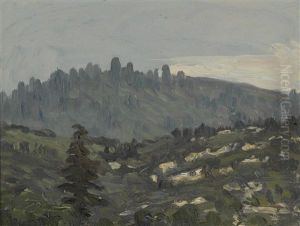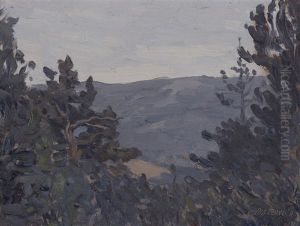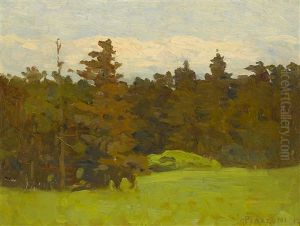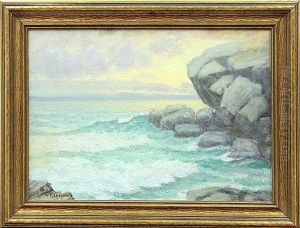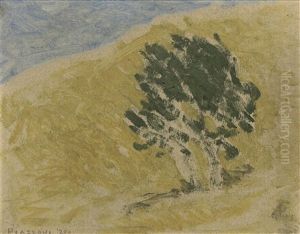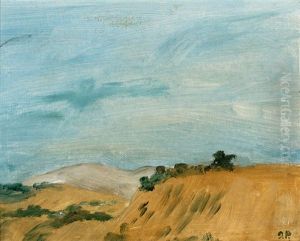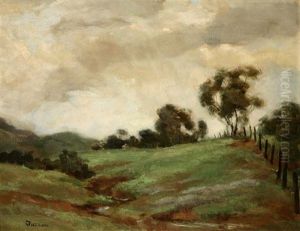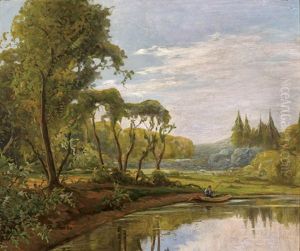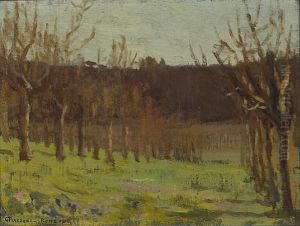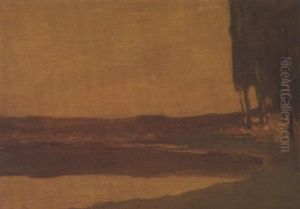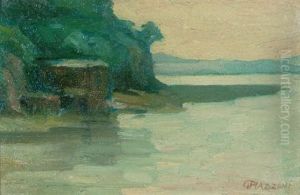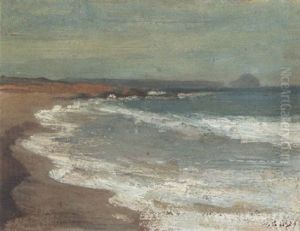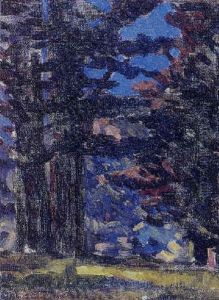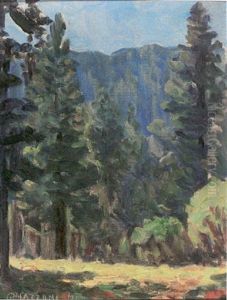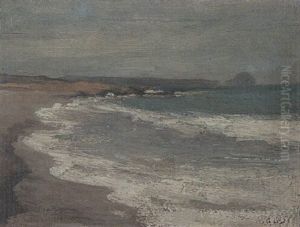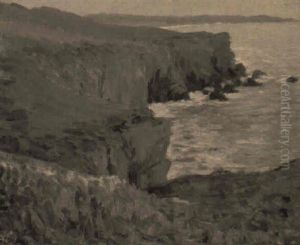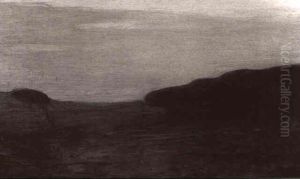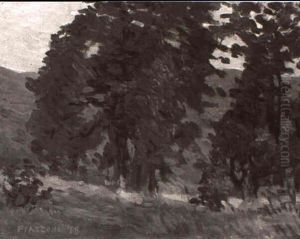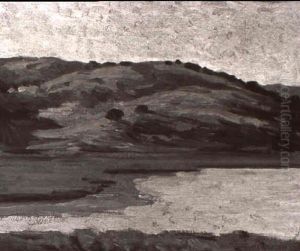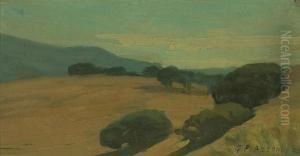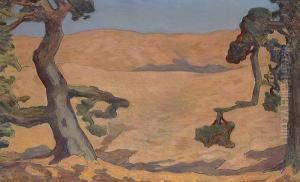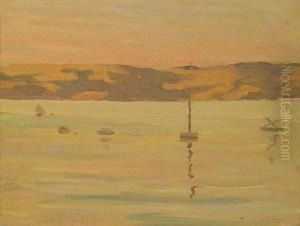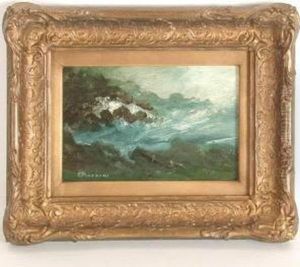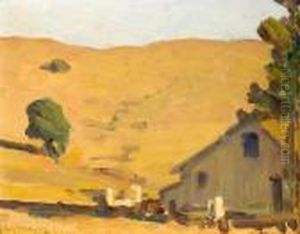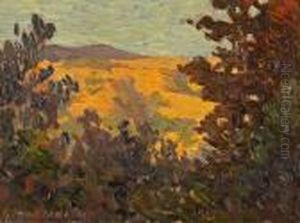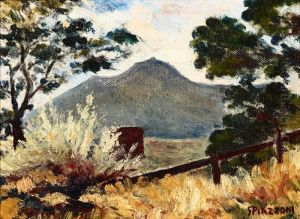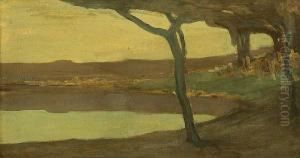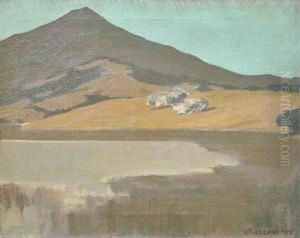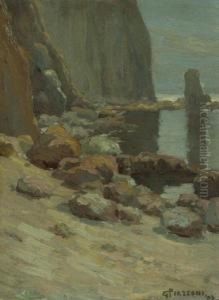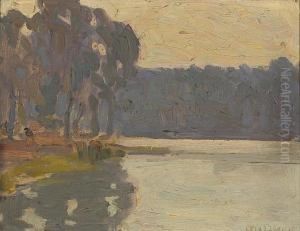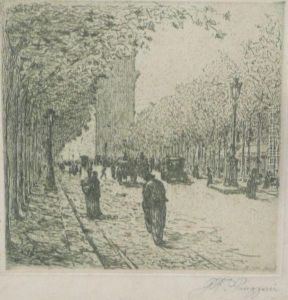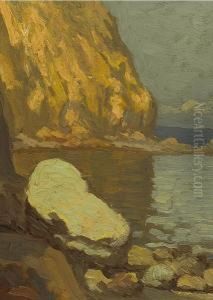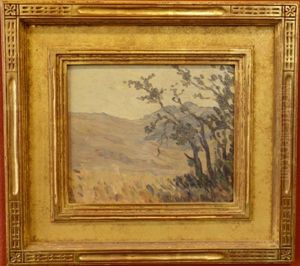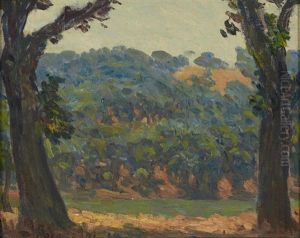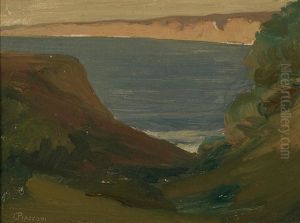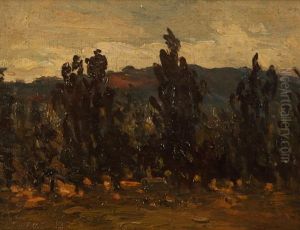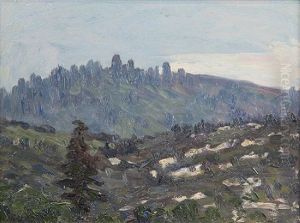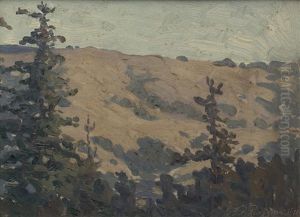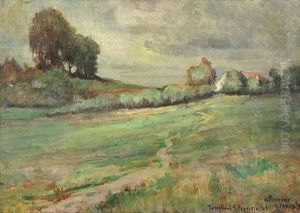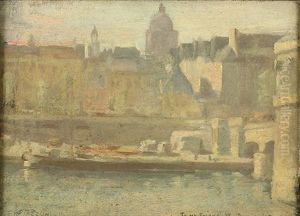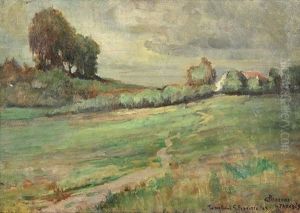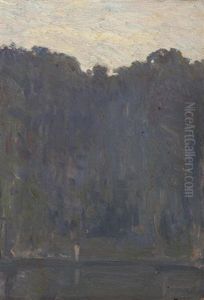Gottardo Piazzoni Paintings
Gottardo Piazzoni was a Swiss-born American painter, muralist, and printmaker known for his serene landscapes and murals that reflect a deep connection to nature and the California landscape in particular. Born on April 27, 1872, in Intragna, Switzerland, Piazzoni emigrated to the United States with his family in 1887, settling in California. His early interest in art led him to study at the California School of Design in San Francisco, where he was influenced by the tonalist movement, which emphasized mood and atmosphere in painting.
Piazzoni's work often features vast, tranquil scenes of the California coast and countryside, marked by a limited palette and subtle, diffused light. His landscapes are not just depictions of physical locations but are imbued with a sense of spirituality and contemplation. In addition to landscapes, Piazzoni created significant murals that are considered some of his most important contributions to American art. His most famous murals, 'The Sea' and 'The Land,' were installed in the San Francisco Public Library in 1932. These works exemplify his ability to blend natural elements with a sense of mysticism and human connection to the environment.
Throughout his career, Piazzoni was an advocate for the preservation of natural landscapes against the encroachment of urban development, a theme that is often reflected in his works. He was a prominent figure in the San Francisco art community and was involved in the founding of the California Society of Etchers, contributing to the revival of the etching medium in the early 20th century.
Despite his contributions to American art and the Californian art scene, Piazzoni's work was somewhat overshadowed by the rise of modernism. However, in recent years, there has been a renewed interest in his work, with exhibitions and research shedding light on his significance as an artist who captured the transcendent beauty of the natural world.
Piazzoni passed away on August 1, 1945, in Carmel, California. His legacy is preserved through his murals, paintings, and prints, which continue to be celebrated for their quiet beauty and profound sense of peace. His work remains a testament to his belief in the power of nature to inspire and heal, making him a unique figure in the history of American art.
